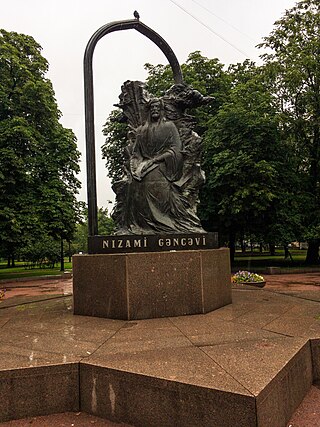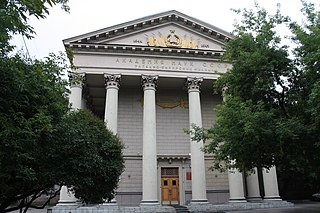
Novosibirsk is the largest city and administrative centre of Novosibirsk Oblast and the Siberian Federal District in Russia. As of the 2021 Census, it had a population of 1,633,595, making it the most populous city in Siberia and the third-most populous city in Russia after Moscow and Saint Petersburg. It is also the most populous city in Asian part of Russia. Novosibirsk is located in southwestern Siberia, on the banks of the Ob River.

The early history of Siberia was greatly influenced by the sophisticated nomadic civilizations of the Scythians (Pazyryk) on the west of the Ural Mountains and Xiongnu (Noin-Ula) on the east of the Urals, both flourishing before the common era. The steppes of Siberia were occupied by a succession of nomadic peoples, including the Khitan people, various Turkic peoples, and the Mongol Empire. In the Late Middle Ages, Tibetan Buddhism spread into the areas south of Lake Baikal.

Yakuts or Sakha are a Turkic ethnic group native to North Siberia, primarily the Republic of Sakha in the Russian Federation, with some extending to the Amur, Magadan, Sakhalin regions, and the Taymyr and Evenk Districts of the Krasnoyarsk region. They speak Yakut, which belongs to the Siberian branch of the Turkic languages.

The laboratory mouse or lab mouse is a small mammal of the order Rodentia which is bred and used for scientific research or feeders for certain pets. Laboratory mice are usually of the species Mus musculus. They are the most commonly used mammalian research model and are used for research in genetics, physiology, psychology, medicine and other scientific disciplines. Mice belong to the Euarchontoglires clade, which includes humans. This close relationship, the associated high homology with humans, their ease of maintenance and handling, and their high reproduction rate, make mice particularly suitable models for human-oriented research. The laboratory mouse genome has been sequenced and many mouse genes have human homologues. Lab mice are sold at pet stores for snake food and can also be kept as pets.

Novosibirsk State University is a public research university located in Novosibirsk, Russia. The university was founded in 1958, on the principles of integration of education and science, early involvement of students with research activities and the engagement of leading scientists in its teaching programmes.

Dmitry Konstantinovich Belyayev was a Soviet geneticist and academician who served as director of the Institute of Cytology and Genetics (IC&G) of the USSR Academy of Sciences, Novosibirsk, from 1959 to 1985. His decades-long effort to breed domesticated silver foxes was described by The New York Times as “arguably the most extraordinary breeding experiment ever conducted.” A 2010 article in Scientific American stated that Belyayev “may be the man most responsible for our understanding of the process by which wolves were domesticated into our canine companions.”

Kamen-na-Obi, known until 1933 as Kamen (Ка́мень), is a town in Altai Krai, Russia, located on the left bank of the Ob River 208 kilometers (129 mi) northwest of Barnaul, the administrative center of the krai. As of the 2010 Census, its population was 43,888.

The Monument to Nicholas I is a bronze equestrian monument of Nicholas I of Russia on St Isaac's Square in Saint Petersburg, Russia. It was created by French sculptor Auguste de Montferrand and unveiled on July 7 [O.S. June 25] , 1859, the six-meter statue was considered a technical wonder at the time of its creation. It is one of only a few bronze statues with only two support points.

The history of model organisms began with the idea that certain organisms can be studied and used to gain knowledge of other organisms or as a control (ideal) for other organisms of the same species. Model organisms offer standards that serve as the authorized basis for comparison of other organisms. Model organisms are made standard by limiting genetic variance, creating, hopefully, this broad applicability to other organisms.

The Siberian Branch of the Russian Academy of Sciences (SBRAS) was established by the Decree of the Government of the USSR which was based on the proposal of Mikhail Lavrentyev, Sergei Sobolev and Sergey Khristianovich in 1957 as a regional division of the Academy of Sciences of the USSR, replacing a previous small branch of the Academy of Sciences of the USSR. Novosibirsk State University was founded to serve as a staff base for the Siberian Branch.

The Monument to Nizami Ganjavi in Saint Petersburg is located in a square situated between houses 25 and 27 on Kamennoostrovsky Prospekt.

The Institute of Systematics and Ecology of Animals (ISEA) located in Novosibirsk is one of the oldest research organization in the Siberian Branch of the Russian Academy of Sciences. The institute was founded in 1944 as Biomedical Institute, the first Siberian academic establishment working in biology. The Siberian Zoological Museum of the ISEA SB RAS has the third-largest coleopteran collection in Russia. Some Siberian research organizations as the Central Siberian Botanical Garden SB RAS and the Institute of Soil Science and Agricultural Chemistry SB RAS were derived from the Institute former laboratories.
The following is a timeline of the history of the city of Novosibirsk, Russia.

The Statue of Yuriy Dolgorukiy is an equestrian statue which commemorates the founding of Moscow in 1147 by Yuriy Dolgorukiy. Dolgorukiy was the Grand Prince of the Kievan Rus' (Kiev) and a member of the Rurik dynasty. On 6 June 1954, the statue was erected on Soviet Square, located in front of the Mossoviet building. The sculptors were Sergei Mikhailovich Orlov, A. P. Antropov, and Nicholay Lvovich Shtamm. The architectural design was by Viktor Semenovich Andreyev. The statue replaced the Monument to the Soviet Constitution, which had been demolished in 1941.

Monument to the founders of Odesa, also known as the monument to Empress Catherine II of Russia and her companions, was a monument located in Odesa, Ukraine, on Katerynska Square.

Institute of Cytology and Genetics of the Siberian Branch of the Russian Academy of Sciences is a research institute based in Novosibirsk, Russia. It was founded in 1957.

Sovetsky District is an administrative district (raion), one of the 10 raions of Novosibirsk, Russia. It is located on the right and left banks of the Ob River. The area of the district is 89,2 km2. Population: 141,911.
MyGenetics is a Russian biotechnology company engaged in the development and conduct of DNA tests in the fields of nutrition, sports, cosmetics and health.
Siberian Research Institute of Plant Cultivation and Breeding is a research institute in Krasnoobsk, Russia. It was founded in 1926. In 2015, the institute became a branch of the Institute of Cytology and Genetics.

Research Institute of Clinical and Experimental Lymphology is a scientific and medical organization in Sovetsky District of Novosibirsk, Russia. It was founded in 1991. The institute is located in Nizhnyaya Yeltsovka Microdistrict. It is a branch of the Institute of Cytology and Genetics.



















